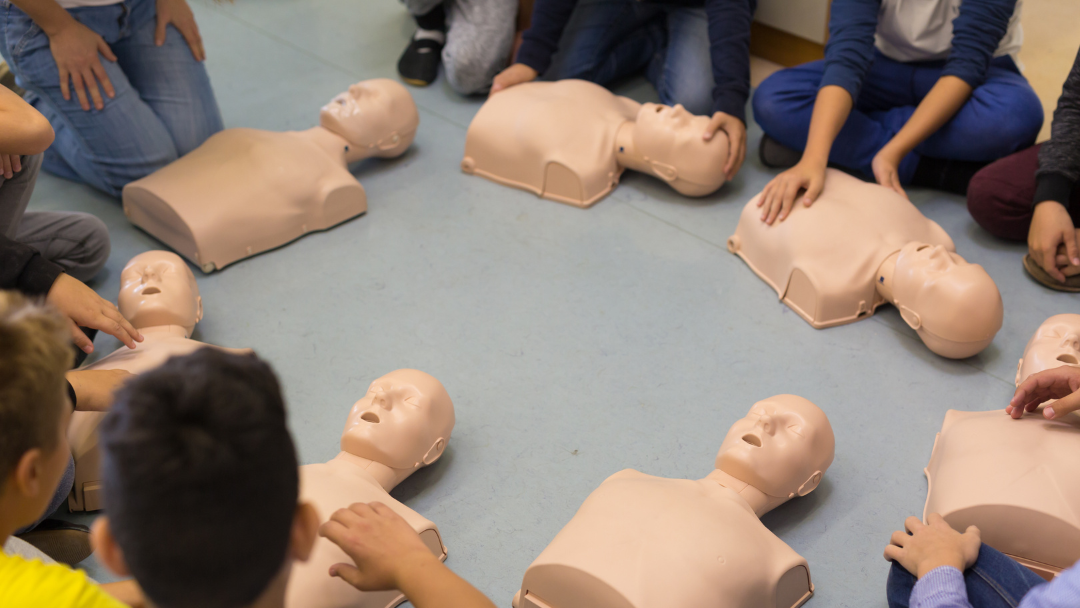
Limmer Education

by Dan Limmer, BS, NRP
Our articles are read by an automated voice. We offer the option to listen to our articles as soon as they are published to enhance accessibility. Issues? Please let us know using the contact form.
Originally published in HOSA eMagazine.
I have been an educator for the better part of 40 years. The last academic year was the first high school EMT class I ever taught. Educator friends and online colleagues shared stories of immaturity and mayhem in the high school experience. I began with a fair amount of nervousness as the class approached. Since you are reading this article, I suspect you know the outcome. My first high school class was one of the most challenging and rewarding classes I ever taught. I am hooked. As I reflect on my first class (and in the middle of my second), I tried to pick out some of the things that made it a success—and things I am now doing differently. While I suspect I am preaching to the choir, I’d like to share some things I have learned.
Are you a student looking for tips on how to be successful in your EMT class? We have those for you here

One of the things I decided early on was that I wasn’t going to start with the mindset that these were kids. They are taking an Emergency Medical Technician class as dual credit college students. Both EMS and college imply (relative) adulthood—and I went for it. I didn’t shelter them. I spiced up class with an occasional real-life street story from my years of experience, and I expected them to hold themselves like EMTs in class. And it worked.
A core concept in public safety is respect. You respect your patient. You respect yourself. You respect and trust your partner. This is how we work together in challenging situations.
When you build a relationship of trust and respect with your students, interesting things happen that transcend the classroom. This is one of the ways we recognize our students are young—and need us. From college hopes and dreams to career advice to frank conversations about family issues and suicidal ideation, trust is the foundation that allows us to make the difference we hear so much about in education.

At times felt like I was walking a tightrope without a net. Especially in the early days. As I look back, it was the students who helped me feel comfortable and succeed. I believe that hesitancy, indecision, and lack of confidence are the precursors to an unsuccessful program. Students can tell. Develop a solid plan—and never let them see you sweat.
My college has a foundation that supplies equipment for my EMT students. I still remember the day we went to the bookstore and got their stethoscopes, penlights, trauma shears, and other EMS equipment. I also remember the day they first came to class in uniform.
If there are uniforms or tools of the trade in your student’s program, always take the time to let them feel the weight of those tools. Feel the excitement of holding those tools for the first time. Feel the wonder of wearing the uniform for the first time. Acknowledge their feelings and share them with them. Take pictures. Then relate their feelings to the career they are exploring. Explain the responsibility of the uniform and how to uphold that responsibility. Let them walk the walk.
I may have struggled here the most. If you asked me, the biggest mistake I made was spending too much time engaging and learning and not enough testing. It is vital to have expectations—and regular testing helps set appropriate expectations.
A colleague taught me if you want students to learn superficially, test them superficially. If you want them to learn comprehensively, test them comprehensively—educator words to live by.
Now that I have made the point about expectations out of the way, the most significant thing we can do as far as techniques is to engage, apply, excite. While I treat my students primarily as adults, I recognize the need to push the envelope as far as creating a dynamic learning environment.
After spending a few weeks on the basics, we begin a case-based learning approach. It goes like this over four 1.5-hour sessions:
Monday – Lecture and learning activities
Tuesday – students assess a simulated patient. This is also uniform day (walk the walk).
Wednesday – students go to the lab to explore treatments and skills they would use on the patient.
Thursday – case presentations. Students present their patients to the class. This includes assessment, differential diagnosis, and treatment plans.

Faculty who teach in other EMT programs at my college consistently tell me how the high school EMT students act more professionally than the other EMT students on campus and outperform them clinically as well.
The balance of the 6 points above brings us to the final point: It is always about learning. Learning is the foundation of what we do, how we prepare our high school EMT students for success in anything they do, and how we send them out the door successful and confident. We teach. They learn.
Trust, respect, feeling, expecting, engaging. The hub all these spokes emerge from is learning.
I’m in my second year of teaching a high school EMT class. I thought my first class may have been a fluke. They were awesome, and I still miss them. My second class seems to be on the same path. I don’t take attendance because the students always show up—as do I. And we are going to do it again. I wouldn’t miss it.
Our curriculum correlation guide is filled with free or mostly free resources to help you plan a flipped EMS course that will keep students engaged, with flexible options for quality online learning. Covers the entire EMT curriculum, with some ALS resources too. You can download the guide for the whole semester or by topic.
✅ prepare students for the NREMT and/or state certification exam
✅ improve performance in class
✅ improve performance in the field
✅ let instructors track and report student work and progress, via the LC-Ready dashboard
Developed by a veteran NREMT director and other leading minds in EMS education, they teach critical thinking, pathophysiology, and NREMT strategies you won’t find anywhere else.
Custom bundles and discounts available for high school programs!

Limmer Education

Dan Limmer, BS, NRP